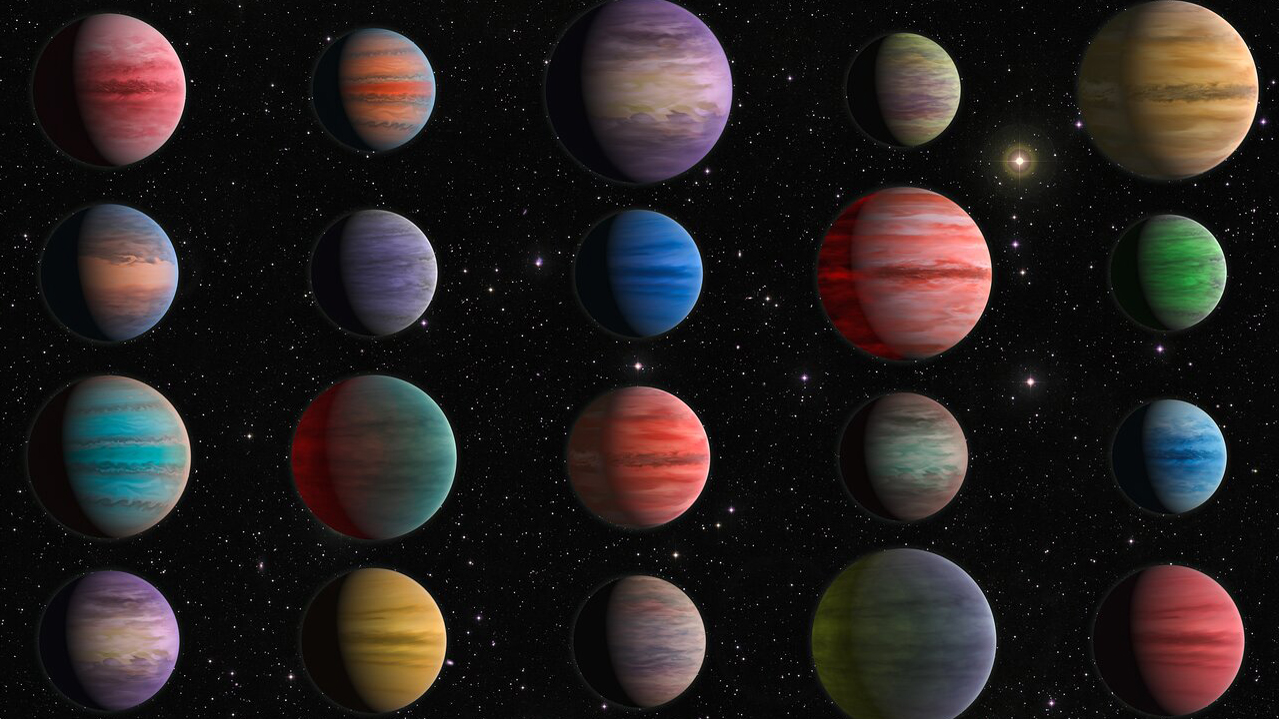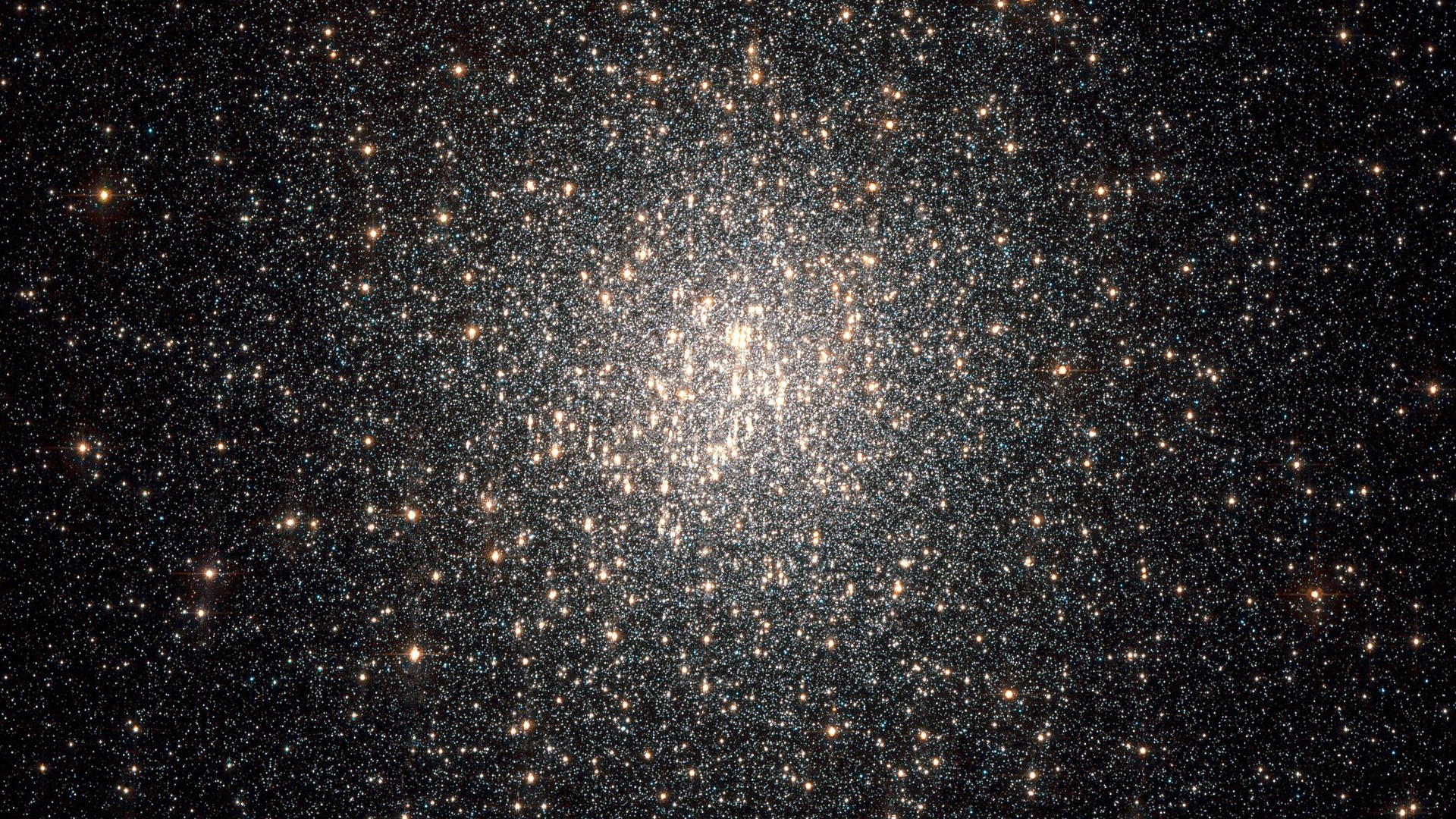Largest ever Hubble telescope survey reveals what makes some exoplanets hot
"The amount of information we learnt about the chemistry and formation is incredible."

An analysis of hundreds of hours of observations by the Hubble Space Telescope has revealed what makes some exoplanets incredibly hot.
In a new study, a team of scientists analyzed the atmospheres of 25 so-called hot Jupiters, exoplanets about as big as Jupiter. These planets, however, orbit extremely close to their parent stars, even closer than Mercury orbits to the sun, making them extremely hot. This new study suggests that the atmospheres of these exoplanets exhibit some unusual thermal behavior that could be related to the planets' chemical composition.
Using over 600 hours of observations by the Hubble Space Telescope and 400 hours of observations by NASA's now retired Spitzer Space Telescope, the study found that some of the atmospheres of the studied hot Jupiters contain high concentrations of hydrogen, titanium oxide, vanadium oxide and iron hydride. These atmospheres displayed what scientists call thermal inversion, a phenomenon whereby atmospheric temperature rises, instead of drops with altitude. (Under normal circumstances, the temperature of an atmosphere is the highest near the surface and decreases with altitudes as the density of the atmosphere drops).
Related: The best Hubble Space Telescope images of all time!
In the Hubble data, the atmospheres of these exoplanets were also, on average, hotter than those without these chemical compounds, reaching temperatures of 3,140 degrees Fahrenheit (1,726 degrees Celsius.) The scientists believe that there might be a direct link. The hydrogen, titanium oxide, vanadium oxide and iron hydride in the planet's atmosphere may act as light absorbers, locking in the heat from the nearby star, they think.
The researchers suggested in the study that some sort of a feedback loop might be going on on these planets. The hot temperatures keep the light-absorbing compounds stable in these atmospheres, which, in turn, leads to the atmospheres absorbing more starlight and warming up even further, especially in the upper layers.
The scientists said in a statement that out of the 25 studied hot Jupiters, those cooler than 3,140 degrees F showed neither the presence of the compounds nor thermal inversion.
Get the Space.com Newsletter
Breaking space news, the latest updates on rocket launches, skywatching events and more!
The study is one of the first looking at a whole population of exoplanets rather than single cases.
"The amount of information we learnt about the chemistry and formation [of the exoplanets] — thanks to a decade of intense observing campaigns — is incredible," Quentin Changeat, an astrophysicist at University College London and lead author of the study, said in the statement.
The analysis could help predict behavior of other exoplanets in the future and unravel processes related to planet formation, the scientists said.
The study was published on April 25 in The Astrophysical Journal.
Follow Tereza Pultarova on Twitter @TerezaPultarova. Follow us on Twitter @Spacedotcom and on Facebook.
Join our Space Forums to keep talking space on the latest missions, night sky and more! And if you have a news tip, correction or comment, let us know at: community@space.com.

Tereza is a London-based science and technology journalist, aspiring fiction writer and amateur gymnast. Originally from Prague, the Czech Republic, she spent the first seven years of her career working as a reporter, script-writer and presenter for various TV programmes of the Czech Public Service Television. She later took a career break to pursue further education and added a Master's in Science from the International Space University, France, to her Bachelor's in Journalism and Master's in Cultural Anthropology from Prague's Charles University. She worked as a reporter at the Engineering and Technology magazine, freelanced for a range of publications including Live Science, Space.com, Professional Engineering, Via Satellite and Space News and served as a maternity cover science editor at the European Space Agency.
